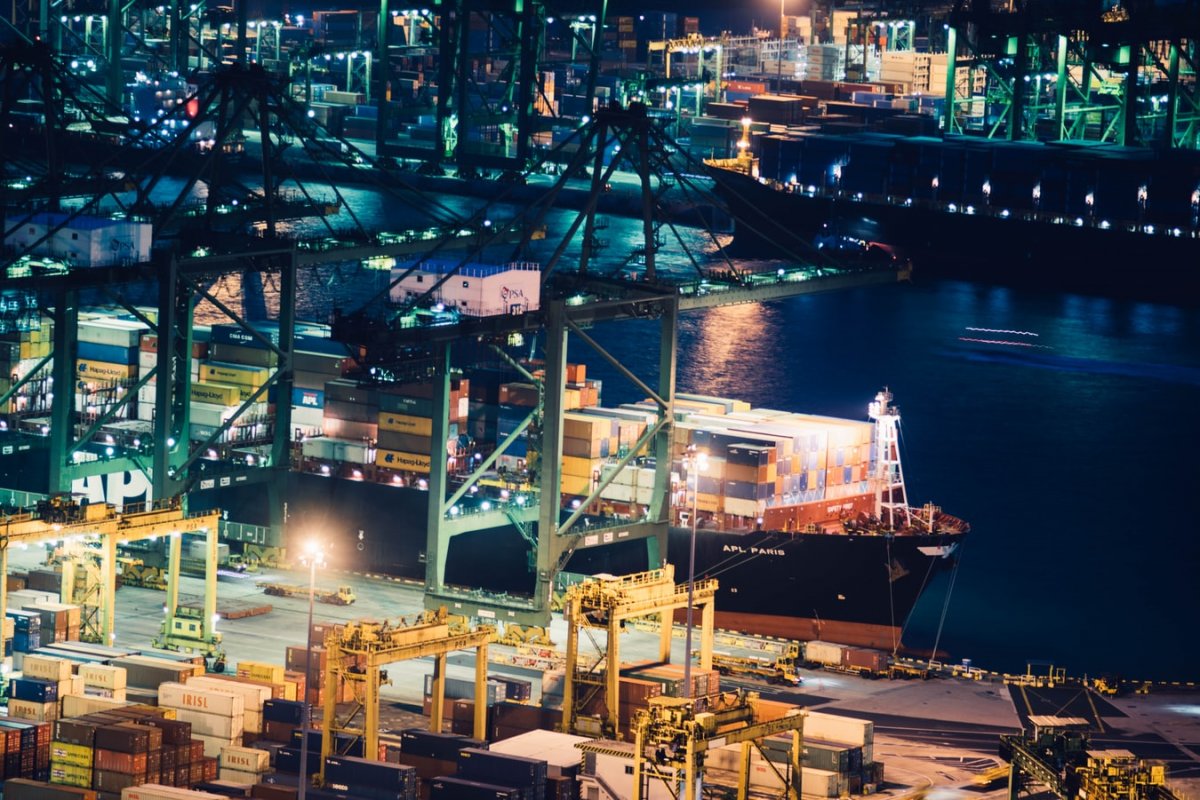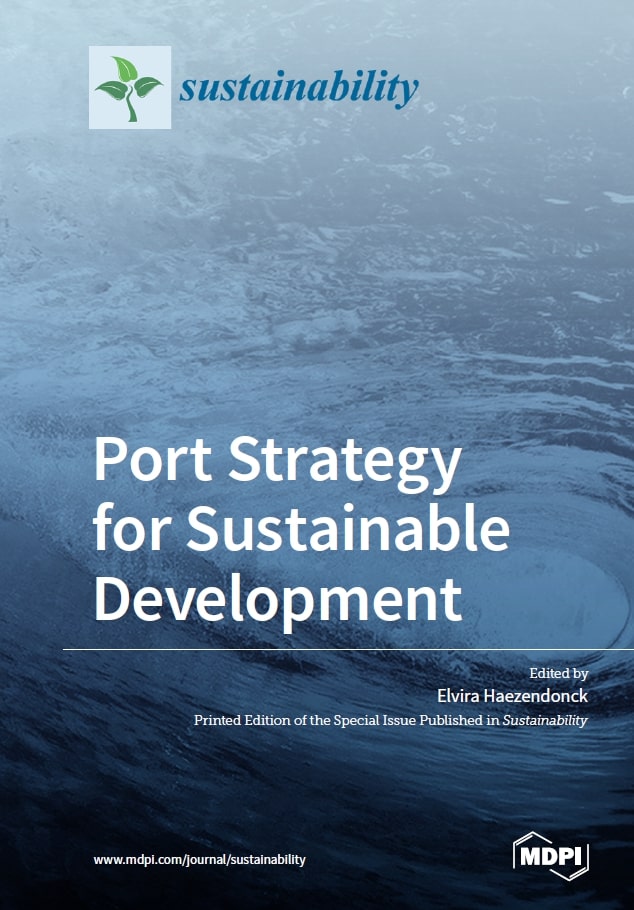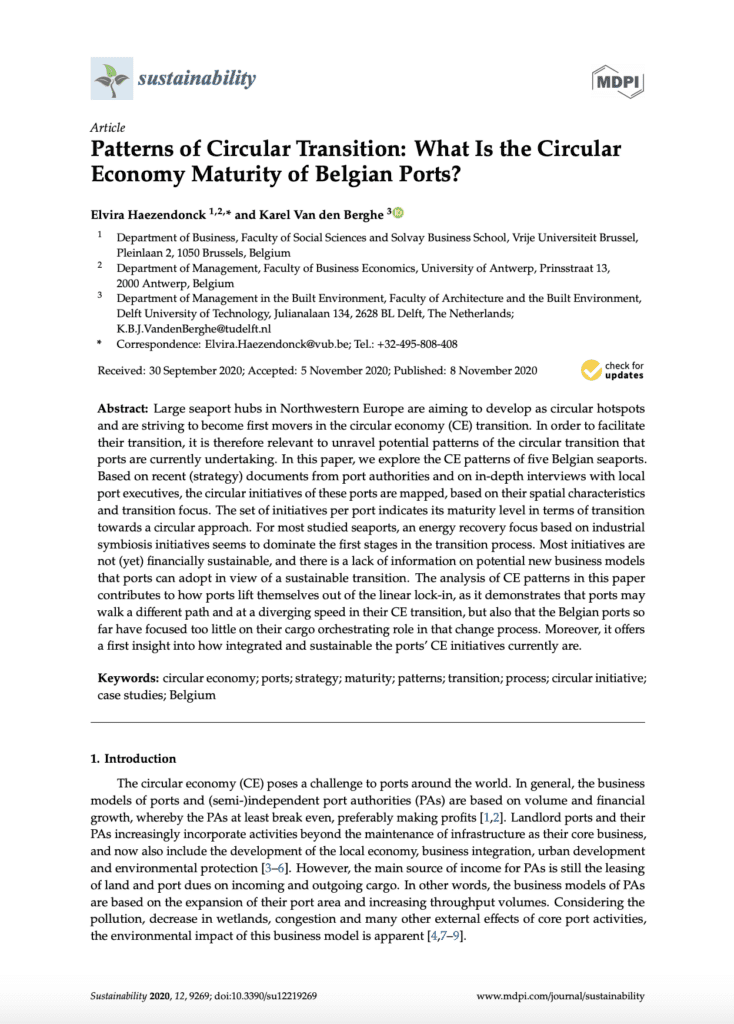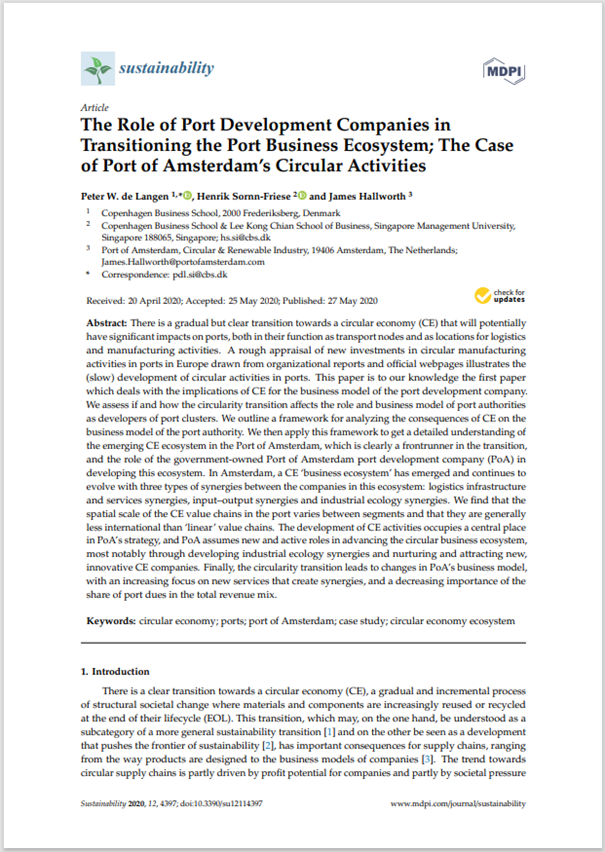A bundling of research into new sustainable strategies and sustainable or circular (business) models for ports
Today, most large port hubs include the circular economy transformation challenge, together with smart digitalization and Internet of Things (IoT), in their strategic priorities. Some port authorities even express the ambition for their port to become a maritime circular hotspot. However, many ports do not seem to have progressed beyond incremental, small-scale sustainable innovations, or the support of rather fragmented sustainability initiatives.
More research can help ports to understand what takes them to the next level in terms of sustainable strategy, preparing for or implementing sustainable and circular business. However, what really takes ports to the next level in terms of preparing for and implementing circular business has hardly been addressed in research so far. Challenges are complex, since ports do not only have to reconsider their own core activities but also their role in the supply chain of shippers, to lift themselves out of the linear lock-in.
Opportunities are also created, as Fusco Girard (2013) argued: “Economic circuits are shortened and the local economy is strengthened through integration” (Fusco Girard, L., 2013, Toward a smart sustainable development of port cities/areas: The role of the “Historic Urban Landscape” approach. Sustainability, 5(10), 4329-4348.). This author put forward that a port’s circularization process consists of an industrial, urban, and city-territorial or regional symbiosis (Fusco Girard, 2013).
However, non-business (government, cluster organizations, etc.) initiatives or support are often behind circular pilot projects, and as much as it can serve as an engine for innovation towards sustainable port development, port authorities and businesses finally need to embrace circular learning and turn these projects into sustainable business models, i.e., with the design of the value creation, delivery, and capture mechanisms employed (Teece, 2010). This strategic change or refocus requires new insights into innovative governance and business frameworks, the link between strategy and commercially viable business models, systems innovation, intensified stakeholder collaboration and co-creation, altered traffic segments and hinterland focus, etc.
Therefore this Special Issue in Sustainability offers a compilation of papers on research into new sustainable strategies and sustainable or circular (business) models for ports. Theoretical as well as empirical, and quantitative as well as qualitative.
Find more details about the special issue
This special issue in Sustainability on “Port Strategy for Sustainable Development” attracted 10 interesting academic papers, which each contribute in a particular way to support sustainable port management, and enrich the insights in the domain of port value creation through sustainability and in the rather novel domain of circular economy.
Basically, the 10 contributions of this special issue can be grouped into three themes which they address and study: (1) the importance of metrics and data sharing; (2) the salience of space attribution and organization; and (3) ensuring the survival of circular economy investments through solid business cases.
This e-book is a reprint of articles from the Special Issue published online in the open access journal Sustainability (ISSN 2071-1050).
Overview of the selected papers from the special issue:
- Port Strategy for Sustainable Development: Circularization and Value Creation—Introduction to a Special Issue
by Elvira Haezendonck - Patterns of Circular Transition: What Is the Circular Economy Maturity of Belgian Ports?
by Elvira Haezendonck and Karel Van den Berghe - Value Creation through Corporate Sustainability in the Port Sector: A Structured Literature Analysis
by Michael Stein and Michele Acciaro - When a Fire Starts to Burn. The Relation Between an (Inter)nationally Oriented Incinerator Capacity and the Port Cities’ Local Circular Ambitions
by Karel Van den Berghe, Felipe Bucci Ancapi and Ellen van Bueren - The Role of Port Development Companies in Transitioning the Port Business Ecosystem; The Case of Port of Amsterdam’s Circular Activities
by Peter W. de Langen, Henrik Sornn-Friese and James Hallworth - The Method to Decrease Emissions from Ships in Port Areas
by Vytautas Paulauskas, Ludmiła Filina-Dawidowicz and Donatas Paulauskas - Port-Related Emissions, Environmental Impacts and Their Implication on Green Traffic Policy in Shanghai
by Yuyan Zhou, Yan Zhang, Dong Ma, Jun Lu, Wenbin Luo, Yu Fu, Shanshan Li, Junlan Feng, Cheng Huang, Wangqi Ge and Hong Zhu - Seaports as Nodal Points of Circular Supply Chains: Opportunities and Challenges for Secondary Ports
by Marta Mańkowska, Izabela Kotowska and Michał Pluciński - Driving Mechanism of Port-City Spatial Relation Evolution from an Ecological Perspective: Case Study of Xiamen Port of China
by Ling Yu, Pengfei Xu, Jia Shi, Jihong Chen and Hong Zhen - Sustainability Reporting for Inland Port Managing Bodies: A Stakeholder-Based View on Materiality
by Magali Geerts and Michaël Dooms - Masterplanning at the Port of Dover: The Use of Discrete-Event Simulation in Managing Road Traffic
by Geoffrey C. Preston, Phillip Horne, Maria Paola Scaparra and Jesse R. O’Hanley




